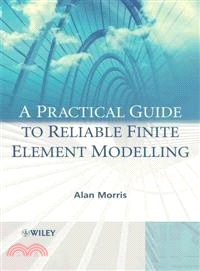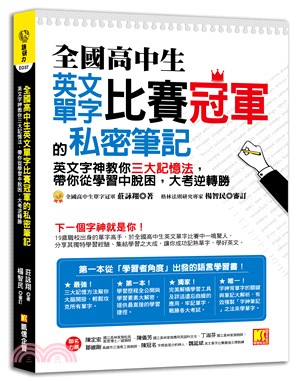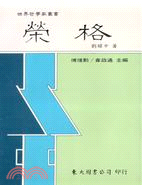A Practical Guide To Reliable Finite Element Modeling
商品資訊
定價
:NT$ 8143 元優惠價
:90 折 7329 元
若需訂購本書,請電洽客服 02-25006600[分機130、131]。
相關商品
商品簡介
作者簡介
目次
商品簡介
Many books have been written about the finite element method; little however has been written about procedures that assist a practicing engineer in undertaking an analysis in such a way that errors and uncertainties can be controlled. In A Practical Guide to Reliable Finite Element Modelling, Morris addresses this important area. His book begins by introducing the reader to finite element analysis (FEA), covering the fundamental principles of the method, whilst also outlining the potential problems involved. He then establishes consistent methods for carrying out analyses and obtaining accurate and reliable results, concluding with a new method for undertaking error control led analyses which is illustrated by means of two case studies.
The book addresses a number of topics that:
• Systematically cover an introduction to FEA, how computers build linear-static and linear-dynamic finite element models, the identification of error sources, error control methods and error-controlled analyses.
• Enable the reader to support the design of complex structures with reliable, repeatable analyses using the finite element method.
• Provide a basis for establishing good practice that could underpin a legal defence in the event of a claim for negligence.
A Practical Guide to Reliable Finite Element Modelling will appeal to practising engineers engaged in conducting regular finite element analyses, particularly those new to the field. It will also be a resource for postgraduate students and researchers addressing problems associated with errors in the finite element method.
This book is supported by an author maintained website at http://www.femec.co.uk
The book addresses a number of topics that:
• Systematically cover an introduction to FEA, how computers build linear-static and linear-dynamic finite element models, the identification of error sources, error control methods and error-controlled analyses.
• Enable the reader to support the design of complex structures with reliable, repeatable analyses using the finite element method.
• Provide a basis for establishing good practice that could underpin a legal defence in the event of a claim for negligence.
A Practical Guide to Reliable Finite Element Modelling will appeal to practising engineers engaged in conducting regular finite element analyses, particularly those new to the field. It will also be a resource for postgraduate students and researchers addressing problems associated with errors in the finite element method.
This book is supported by an author maintained website at http://www.femec.co.uk
作者簡介
Alan Morris has recently retired from his post at Cranfield University in the UK as Professor of Structural Analysis. His range of expertise covers the development and application of optimal design and analysis systems, with special emphasis on the finite element methods and structural optimisation programs. Previously, he was a Principal Research Officer in the Royal Aircraft Establishment (now QinetiQ) at Farnborough and was head of the Structures and Optimization Sections at the Advanced Concepts Section.
目次
Preface.
Chapter 1. Introduction.
1.1 Aim of the book.
1.2 Finite Element Types - a Brief Overview.
1.3 Finite Element Analysis and Finite Element Representations.
1.4 Multi-Model Analyses.
1.5 Consistency, Logic and Error Control.
1.6 Chapter Contents.
Chapter 2 Overview of Static Finite Element Analysis.
2.1 Introduction.
2.2 The Direct Method for Static Analyses.
2.3 Reducing the Problem Size.
Chapter 3: Overview of Dynamic Analysis
3.1 Introduction
3.2 Element Mass Matrix.
3.3 Additional Information that can be Extracted to Support a Dynamic Finite Element Analysis.
3.4 Forced Responses.
3.5 Damped Forced Responses.
3.6 Reducing the Problem Size.
Chapter 4: What's Energy Got to Do with It?
4.1 Introduction .
4.2 Strain Energy.
4.3 Potential Energy.
4.4 Simple Bar.
4.5 General Case.
4.6 Minimum Potential Energy.
4.7 The Principle of Minimum Potential Energy Applied to a Simple Finite Element Problem.
4.8 Finite Element Formulation.
4.9 Direct Application to an Axial Bar Element.
4.10 Convergence in Energy and Convergence in Stress.
4.11 Results Interpretation.
4.12 Kinetic Energy.
4.13 Final Remark.
Chapter 5. Preliminary Review of Errors and Error Control.
5.1 Introduction.
5.2 The Finite Element Process.
5.3 Error and Uncertainty.
5.4 Novelty, Complexity and Experience.
5.5 Role of Testing.
5.6 Initial Steps.
5.7 Analysis Validation Plan (AVP).
5.8 Applied Common Sense.
5.9 The Process.
Chapter 6. Discretisation: Elements and Meshes or Some Ways to Avoid Generated Error.
6.1 Introduction.
6.2 Element Delivery.
6.3 Mesh Grading and Mesh Distortion.
6.4 The Accuracy Ladder.
Chapter 7. Idealisation Error Types and Sources.
7.1 Design Reduction and Idealisation Errors.
7.2 Analysis Features.
7.3 The Domain.
7.4 Levels of Abstraction.
7.5 Boundary Conditions.
7.6 Material Properties.
7.7 Loads and Masses.
Chapter 8. Error Control.
8.1 Introduction.
8.2 Approach and Techniques.
8.3 Accumulation of Errors and Uncertainties.
8.4 The Role of Testing.
Chapter 9. Error Controlled Analyses.
9.1 Introduction.
9.2 Is the Finite Element System Fit for Purpose.
9.3 Quality Report.
9.4 The Error and Uncertainty Control Method.
Chapter 10 FEMEC Walkthrough Example.
10.1 Introduction.
10.2 FEMEC Static Analysis Illustrative Problem.
10.3 A Brief Look at the Dynamic FEMEC World.
Index.
Chapter 1. Introduction.
1.1 Aim of the book.
1.2 Finite Element Types - a Brief Overview.
1.3 Finite Element Analysis and Finite Element Representations.
1.4 Multi-Model Analyses.
1.5 Consistency, Logic and Error Control.
1.6 Chapter Contents.
Chapter 2 Overview of Static Finite Element Analysis.
2.1 Introduction.
2.2 The Direct Method for Static Analyses.
2.3 Reducing the Problem Size.
Chapter 3: Overview of Dynamic Analysis
3.1 Introduction
3.2 Element Mass Matrix.
3.3 Additional Information that can be Extracted to Support a Dynamic Finite Element Analysis.
3.4 Forced Responses.
3.5 Damped Forced Responses.
3.6 Reducing the Problem Size.
Chapter 4: What's Energy Got to Do with It?
4.1 Introduction .
4.2 Strain Energy.
4.3 Potential Energy.
4.4 Simple Bar.
4.5 General Case.
4.6 Minimum Potential Energy.
4.7 The Principle of Minimum Potential Energy Applied to a Simple Finite Element Problem.
4.8 Finite Element Formulation.
4.9 Direct Application to an Axial Bar Element.
4.10 Convergence in Energy and Convergence in Stress.
4.11 Results Interpretation.
4.12 Kinetic Energy.
4.13 Final Remark.
Chapter 5. Preliminary Review of Errors and Error Control.
5.1 Introduction.
5.2 The Finite Element Process.
5.3 Error and Uncertainty.
5.4 Novelty, Complexity and Experience.
5.5 Role of Testing.
5.6 Initial Steps.
5.7 Analysis Validation Plan (AVP).
5.8 Applied Common Sense.
5.9 The Process.
Chapter 6. Discretisation: Elements and Meshes or Some Ways to Avoid Generated Error.
6.1 Introduction.
6.2 Element Delivery.
6.3 Mesh Grading and Mesh Distortion.
6.4 The Accuracy Ladder.
Chapter 7. Idealisation Error Types and Sources.
7.1 Design Reduction and Idealisation Errors.
7.2 Analysis Features.
7.3 The Domain.
7.4 Levels of Abstraction.
7.5 Boundary Conditions.
7.6 Material Properties.
7.7 Loads and Masses.
Chapter 8. Error Control.
8.1 Introduction.
8.2 Approach and Techniques.
8.3 Accumulation of Errors and Uncertainties.
8.4 The Role of Testing.
Chapter 9. Error Controlled Analyses.
9.1 Introduction.
9.2 Is the Finite Element System Fit for Purpose.
9.3 Quality Report.
9.4 The Error and Uncertainty Control Method.
Chapter 10 FEMEC Walkthrough Example.
10.1 Introduction.
10.2 FEMEC Static Analysis Illustrative Problem.
10.3 A Brief Look at the Dynamic FEMEC World.
Index.
主題書展
更多
主題書展
更多書展本週66折
您曾經瀏覽過的商品
購物須知
外文書商品之書封,為出版社提供之樣本。實際出貨商品,以出版社所提供之現有版本為主。部份書籍,因出版社供應狀況特殊,匯率將依實際狀況做調整。
無庫存之商品,在您完成訂單程序之後,將以空運的方式為你下單調貨。為了縮短等待的時間,建議您將外文書與其他商品分開下單,以獲得最快的取貨速度,平均調貨時間為1~2個月。
為了保護您的權益,「三民網路書店」提供會員七日商品鑑賞期(收到商品為起始日)。
若要辦理退貨,請在商品鑑賞期內寄回,且商品必須是全新狀態與完整包裝(商品、附件、發票、隨貨贈品等)否則恕不接受退貨。























